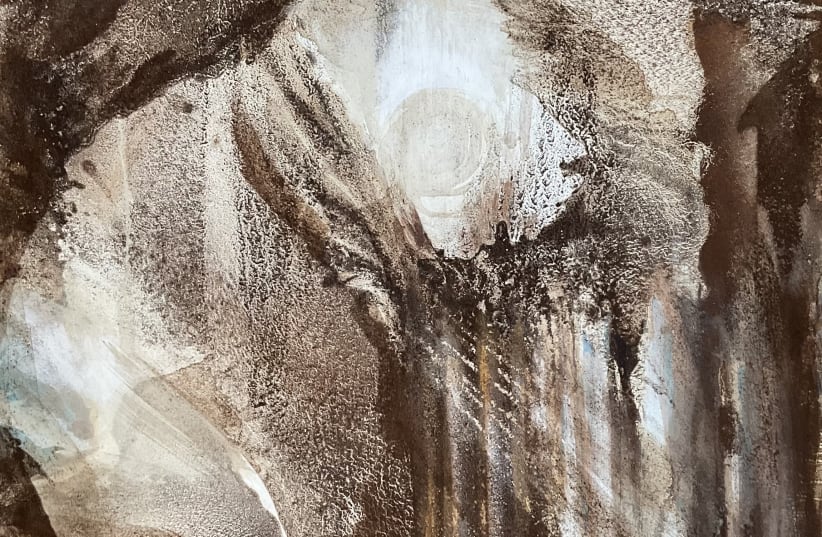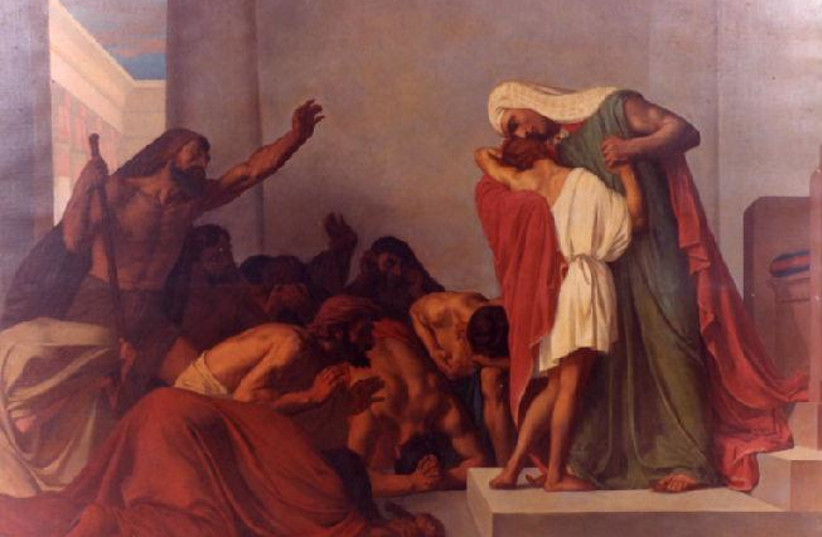“When Joseph came to his brothers, they stripped him of his long, colorful coat that he was wearing. They took him and threw him into the pit; the pit was empty, there was no water in it” (Genesis 37:23-24).
Joseph is cast into a pit, a bor. All the text tells us is that the pit contained no water. However, the Talmud tells us that even though there was no water, there were snakes and scorpions, and the pit was very deep (Shabbat 22a). The text does not tell us that Joseph cried out to them, only that “the brothers sat down to eat a meal.”
According to the Rashbam (grandson of Rashi), the brothers did not want to hear Joseph’s cries from the pit while they were eating, so they distanced themselves from the place until they could no longer hear him. Not until years later, when Joseph meets his brothers in Egypt, do we hear the brothers say to each other, “Indeed, we are guilty for our brother, that we saw the anguish of his soul when he begged us, and we did not listen” (Gen. 42:21).
In Egypt, Joseph is once again flung into a place called a bor, and this time it is a prison. “For I was stolen from the land of the Hebrews; and here, too, I have done nothing that they should have put me into the bor” (Gen. 40:15).
“Pharaoh sent and called Joseph, and they rushed him from the bor, and he shaved and changed his clothes and came to Pharaoh” (Gen. 41:14). Joseph rises from the depths of the prison pit to the heights of royalty.
These pits into which Joseph was flung were symbols of hatred and injustice, of dire straits, loss and despair; yet even in these places, there is hope and the possibility of miracles and triumph. Psalm 130, from which the title of this painting Mi’mamakim is taken (“From the depths I have called you, O Lord”), is called “A Song of Ascents.” It was because Joseph was thrown into a pit that he was ultimately able to save his entire family; as he says to his brothers, “Indeed, you intended evil against me, [but] God designed it for good” (Gen. 50:20).
The Midrash relates that after burying his father, Jacob, in Hebron, before returning to Egypt Joseph went back to the pit into which his brothers had cast him in order to recite the blessing “Blessed is the One who performed a miracle for me in this place.”
Experiencing metaphorical pits, like what Joseph was thrown into
WE HAVE all experienced pits in our lives. But to go back and say a blessing over your pit is a gift. Thanksgiving night marked seven years since the fire that burned my husband’s (Yoram) studio, along with many hundreds of his paintings. All gone up in smoke. Surrounded by flames, we barely escaped. When we returned two days later, the studio was a 300-square meter pit of smoking metal. However, we realized that a miracle had happened: Our house did not burn down. We still had a home. Since then, every Thanksgiving we give thanks for the miracles that were done for us on that night and for all the good and blessings that came with the rebuilding.
Titled Mi’mamakim (“From the Depths”), this work was painted in Raanan’s novel medium of coffee grounds mixed with acrylic binder. The grounds give the painting a rocky, earthy feeling and a sense of drama. At the top of the pit is a surrounding curve. This broad, dark swathe wraps around, giving the feeling of a hole in the earth looking up from the depth of the pit. Near the bottom is the suggestion of a standing figure looking up, with rays of light coming down. Yet in the background, a lighter, circular area indicates the mouth of the pit, and around its edge are shapes that could be the wings of angels. Or perhaps these shapes suggest the outstretched arms of a figure calling out from the depths.
Raanan explains that in his process of painting, much has to do with letting go of control and allowing the paint to flow and manifest images. We wonder if perhaps the pale sun/moon could be a head joined to the wings of prayer from below. Vertical lines perhaps suggest figures looking up into formidable spaces that seem impossible to overcome, or maybe they are the stripes of a tallit (prayer shawl) hanging down. The sun rays give a sense of hope, of being heard, of redemption.
WE NOW find ourselves in dark places of evil and injustice, feeling broken-hearted. From this broken place, these dire straits, we call out to the Blessed One to show us the good and to perform miracles for us in this place, our homeland.
Israeli poet Hamutal Bar-Yosef, in her poem “Joseph,” has the biblical figure looking back on his ordeal in the pit, saying, “The hard part was staying focused/ On that white circle.”
May we stay focused on the white circle, the sun of divine providence seen from the depths, until we see the fulfillment of Isaiah’s prophecy: “Hearken to Me, you pursuers of righteousness, you seekers of the Lord; look at the rock whence you were hewn and at the hole of the pit whence you were dug.…For the Lord shall console Zion, He shall console all its ruins, and He shall make its desert like a paradise and its wasteland like the garden of the Lord; joy and happiness shall be found therein, thanksgiving and a voice of song” (Isaiah 51:1,3). ■
Meira Raanan is the author of Art of Revelation: A Visual Encounter with the Jewish Bible, a commentary on the paintings by her husband, Yoram Raanan. She also teaches Jewish meditation. Esther Cameron is a poet, scholar, and essayist living in Jerusalem. She is editor-in-chief of The Deronda Review.

